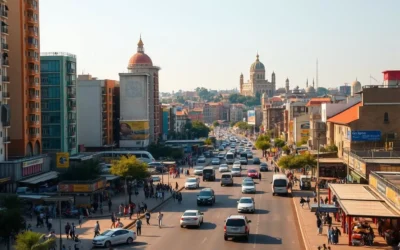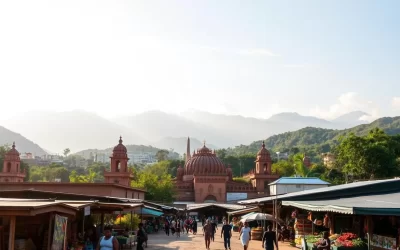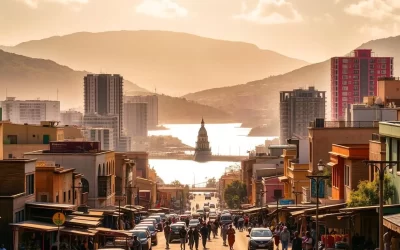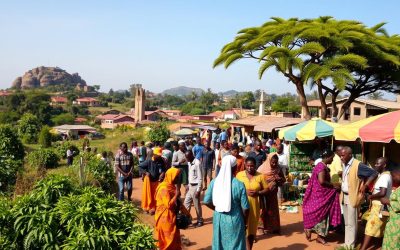You may not know it, but Guinea is a treasure trove of diverse landscapes and cultural experiences waiting to be explored.
Located in the tropical south-western part of West Africa, this developing country boasts rainforests, highlands, beaches, and wildlife sanctuaries that are sure to captivate any traveler.
After recovering from political instability, Guinea is becoming increasingly accessible to travelers seeking adventure and natural beauty. As you explore this frontier destination, you’ll discover authentic cultural experiences that can’t be found elsewhere.
In this article, we’ll take you on a journey through the must-visit destinations and experiences that make Guinea a remarkable reward for intrepid travelers.
Discovering Guinea’s Hidden Treasures
Despite facing significant turmoil, Guinea stands as a testament to resilience and untouched natural splendor. This West African nation, comparable in size to the UK, is a treasure trove of diverse landscapes, from pristine beaches to dense rainforests and towering mountains. You can experience authentic adventures away from the crowds, immersing yourself in the warm hospitality of the Guinean people, who take great pride in their cultural heritage.
Guinea offers a unique blend of French colonial influence and traditional African cultures, making it a fascinating destination for travelers. As you explore this off-the-beaten-path country, you’ll discover a wealth of exciting things to do and see. The following sections will guide you through the most rewarding places to visit in Guinea, showcasing the best of this hidden gem in West Africa.
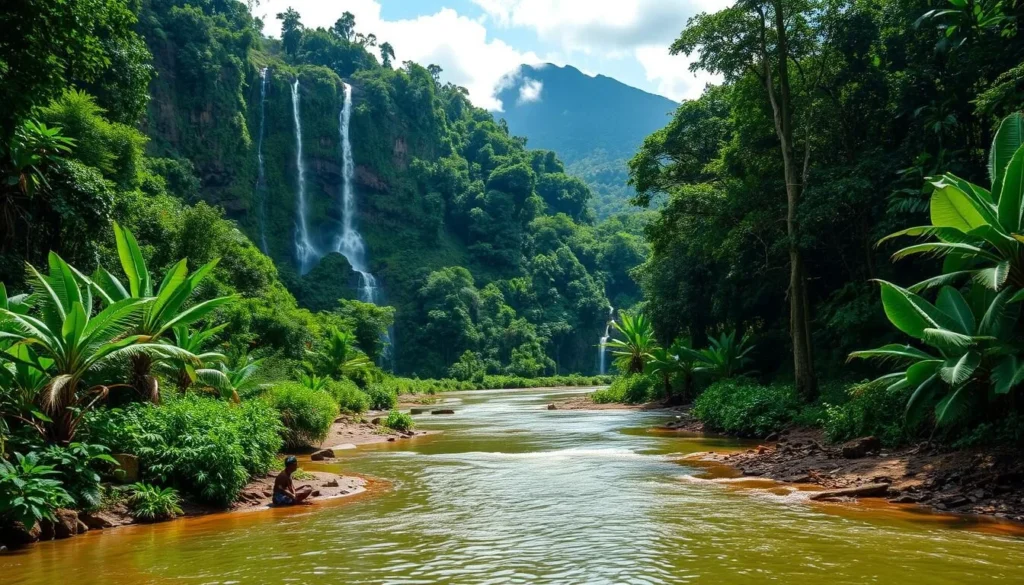
Conakry: The Vibrant Capital
Your journey to Conakry, Guinea’s bustling capital, promises an unforgettable experience filled with historical landmarks and cultural treasures.
Marché Madina: West Africa’s Largest Market
Marché Madina is a must-visit destination, offering a kaleidoscope of colors, sounds, and aromas. As West Africa’s largest market, it’s a hub for local commerce and culture.
National Museum of Guinea
The National Museum of Guinea provides a fascinating glimpse into the country’s history and cultural diversity, featuring a range of artifacts and exhibits.
Conakry Grand Mosque
The Conakry Grand Mosque is one of Africa’s largest mosques, serving as both a significant religious center and cultural symbol. Its impressive scale and design make it a notable landmark.
Iles de Los: Pristine Island Paradise
Escape to the Iles de Los, a tranquil island getaway off the coast of Guinea. This archipelago is known for its stunning beaches and crystal-clear waters, making it an ideal destination for those seeking relaxation and natural beauty.
Best Beaches on Roume and Kassa Islands
The beaches on Roume and Kassa islands are truly breathtaking, with pristine white sand and crystal-clear waters perfect for swimming and snorkeling. You can enjoy sunbathing on the beach or explore the surrounding waters for marine life. The islands offer a peaceful atmosphere, with fewer crowds than more established beach destinations.
Some of the top beaches are found on Ile de Roume and Kassa, offering a range of experiences. You can relax on the beautiful beaches, or take a boat trip between the islands. The clear waters make these beaches ideal for observing marine life.
Fouta Djallon Highlands: Guinea’s Natural Wonder
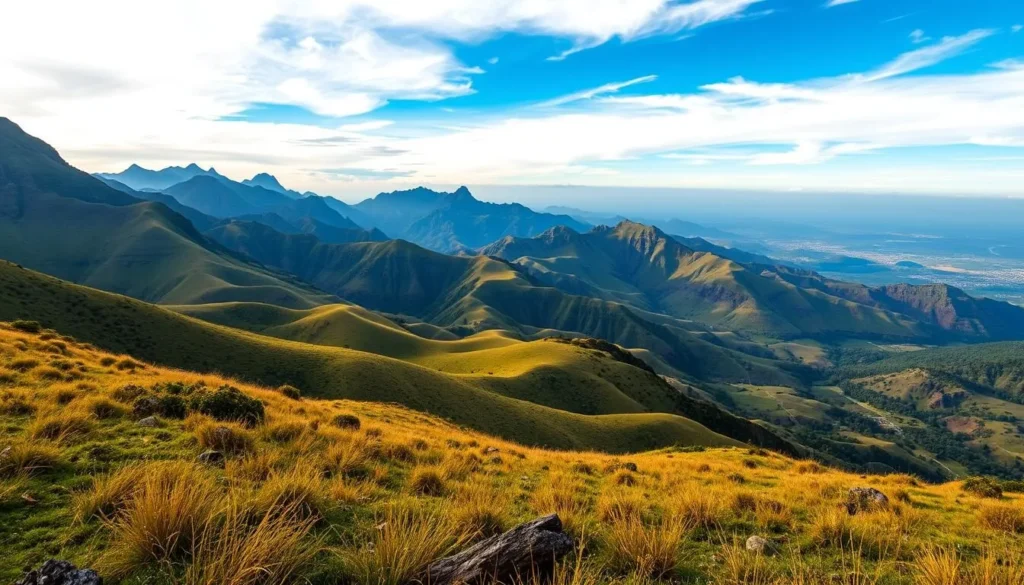
As you venture into the Fouta Djallon Highlands, you’ll discover a landscape of rolling meadows, peaks, and canyons. This region is perfect for outdoor enthusiasts, offering numerous opportunities for trekking and exploration.
Trekking Adventures in Guinea’s Heartland
The Fouta Djallon Highlands offer exciting trekking adventures through its picturesque landscapes. You’ll have the chance to explore the region’s natural beauty, including its Instagrammable fountains and scenic vistas. Over time, you’ll experience the thrill of discovering hidden gems in this breathtaking landscape.
Traditional Villages and Local Culture
The Fouta Djallon region is home to traditional villages that offer a glimpse into authentic Guinean rural life. You’ll encounter the warm hospitality of the Fulani people, who have inhabited this region for centuries. The villages are characterized by round mud-brick houses with thatched roofs, showcasing traditional architecture. Visitors can engage in cultural exchange through homestays or guided village visits, experiencing traditional agricultural practices, crafts, and even local music and dance performances.
Mount Nimba: UNESCO World Heritage Site

Located in the heart of Guinea, Mount Nimba is a UNESCO World Heritage Site that boasts breathtaking landscapes and unique biodiversity. At an altitude of 5,700 feet, the Nimba Range offers stunning views of the surrounding landscape and clouds. To explore this natural wonder, it’s essential to hire a guide who can navigate the terrain and provide insights into the region’s flora and fauna.
Unique Wildlife and Biodiversity
Mount Nimba is a global conservation priority due to its extraordinary biodiversity. The region is home to rare and endemic species found nowhere else on Earth, such as the viviparous toad that gives birth to live young. The diverse habitats, ranging from montane forests to high-altitude grasslands, support different wildlife communities.
- Detail the extraordinary biodiversity that makes Mount Nimba a global conservation priority
- Describe the rare and endemic species found nowhere else on Earth, including the viviparous toad that gives birth to live young
- Highlight the diverse habitats ranging from montane forests to high-altitude grasslands that support different wildlife communities
- Explain how the isolation of the mountain range has led to unique evolutionary adaptations in local species
- Mention the larger mammals that can be found in the area, including forest elephants and various primates
- Discuss the challenges of wildlife viewing in this remote region and the patience required
- Note the importance of experienced guides who can help spot and identify the elusive wildlife
- Emphasize the fragility of this ecosystem and the responsible tourism practices necessary to preserve it
The isolation of the mountain range has led to unique evolutionary adaptations in local species. Visitors may catch glimpses of larger mammals, including forest elephants and various primates. However, wildlife viewing in this remote region requires patience and the assistance of experienced guides who can help spot and identify the elusive wildlife.
It’s crucial to adopt responsible tourism practices to preserve the fragility of this ecosystem. By doing so, we can ensure that Mount Nimba remains a haven for its unique biodiversity.
Cape Verga: Guinea’s Beach Haven
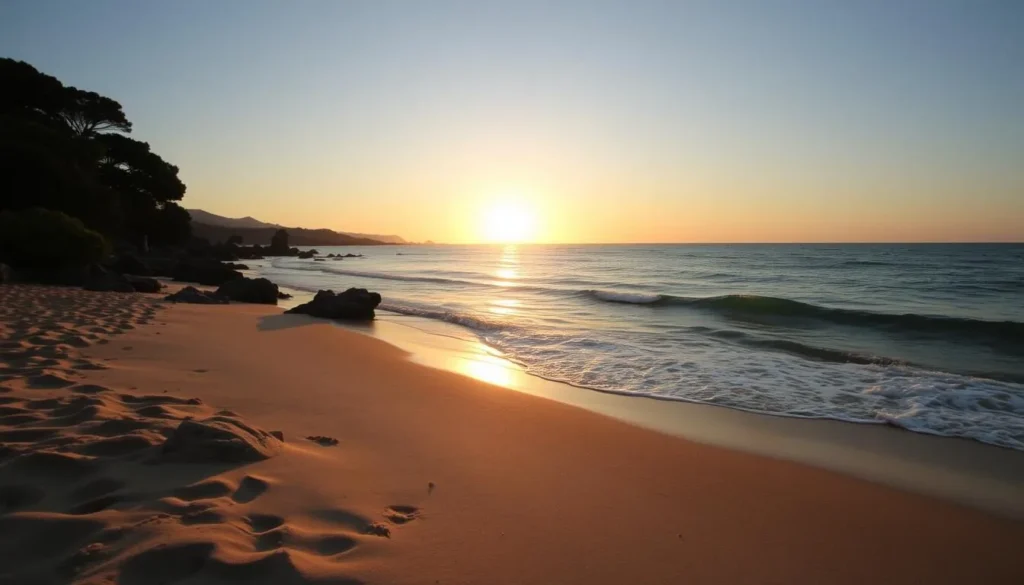
Beach enthusiasts will fall in love with Cape Verga, Guinea’s picturesque coastal gem. This haven offers a serene escape from the hustle and bustle of city life, with its pristine beaches and vibrant culture.
Sobane and Bel Air Beaches
Sobane and Bel Air are two of the most famous beaches in the Cape Verga area, known for their isolated beauty and wide stretches of golden sand. While Sobane maintains a more natural setting, Bel Air has seen some development with the addition of restaurants and bars.
Sobane Beach is characterized by its untouched landscape, offering a tranquil atmosphere perfect for relaxation. On the other hand, Bel Air Beach provides a mix of seclusion and entertainment, with water sports equipment rental available.
The beaches in Cape Verga are not only beautiful but also relatively uncrowded, making them an ideal destination for those seeking a peaceful retreat. Visitors can enjoy swimming in the clear waters, with safety conditions being generally good.
The developing beach culture in Cape Verga is a blend of local and international influences, with many travelers visiting from around the world. The area is also known for its natural rock formations and stunning sunset viewing spots.
National Park of Upper Niger: Wildlife Sanctuary
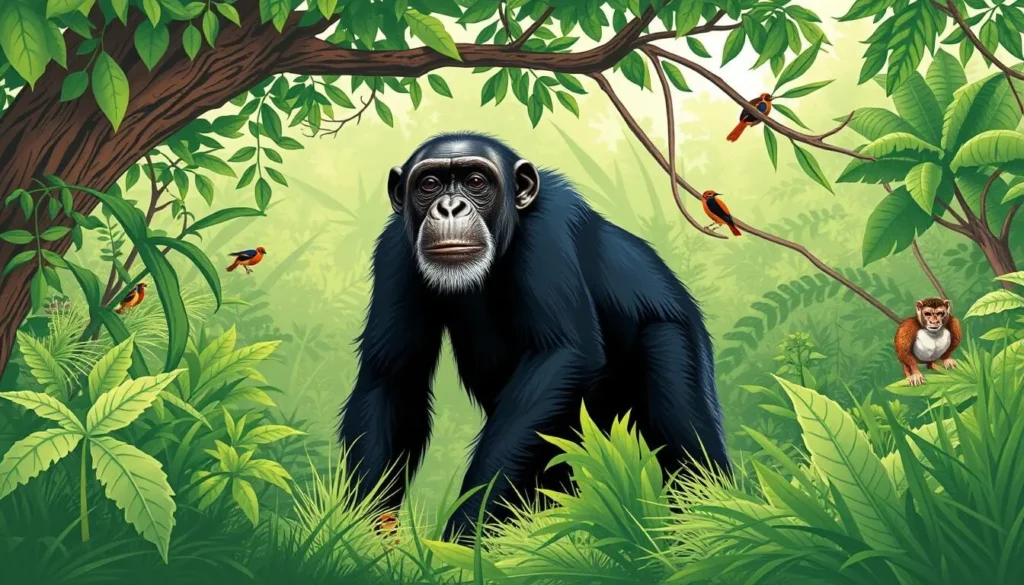
With its vast riparian woodlands and savannah, the National Park of Upper Niger is a unique conservation destination in West Africa. Spanning over 6,000 square kilometers in eastern Guinea, this national park is home to a diverse range of wildlife, including chimpanzees, Gambian mongooses, and West African manatees.
Conservation Efforts and Endangered Species
The park is involved in various conservation initiatives to protect its unique biodiversity. Some of the endangered species that find refuge here include chimpanzees, forest elephants, and West African manatees. These species face threats such as habitat loss and poaching, which the park addresses through conservation efforts.
Visitors can contribute to conservation through responsible tourism practices and awareness. The park also collaborates with international partners to provide funding and expertise for the protection of this important ecosystem.
Labé: Cultural Hub of the Fouta Djallon
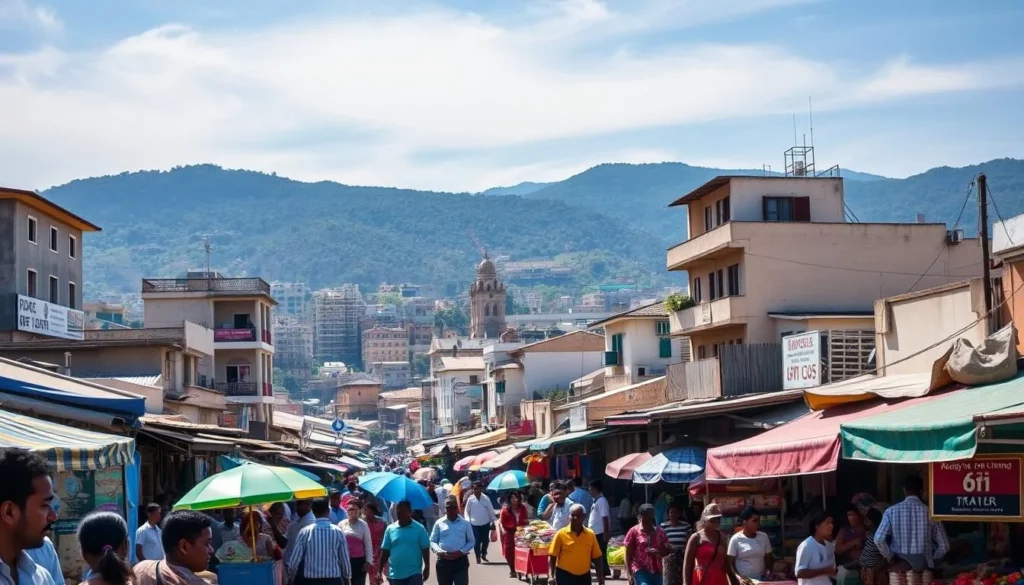
Labé, the largest city in the Fouta Djallon region, is a must-visit destination for cultural enthusiasts. You can experience the rich cultural heritage of the region by visiting its bustling markets.
Grand Marché and Local Museums
The Grand Marché of Labé is one of Guinea’s most important commercial centers, offering a vibrant atmosphere with vendors from across West Africa selling diverse goods, including textiles, spices, and handicrafts. You can also explore local museums that preserve and showcase the cultural heritage of the Fouta Djallon, featuring historical artifacts and traditional crafts.
Nzérékoré: Gateway to the Forest Region
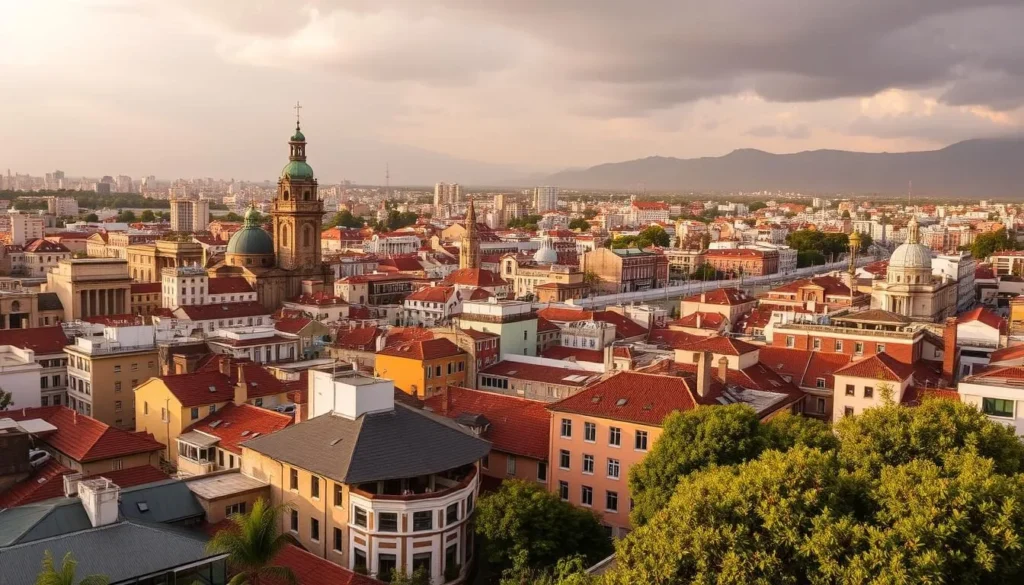
As a gateway to Guinea’s Forest Region, Nzérékoré offers a unique blend of cultural experiences and natural beauty. This fast-growing city has been a refuge for those fleeing conflicts in neighboring countries, resulting in a diverse population.
Nzérékoré is renowned for its silver crafting tradition, with skilled artisans creating beautiful pieces using traditional techniques. You can observe these craftspeople at work and purchase authentic silver jewelry and decorative items directly from them.
Silver Crafts and Local Markets
The city’s vibrant local markets are a testament to its cultural diversity, offering a wide range of forest products and imported goods. Visitors can explore these bustling trading centers, interact with people from various backgrounds, and experience the rich cultural heritage of Nzérékoré.
Some of the unique items you can find in these markets include handmade silver crafts, local textiles, and forest produce. The markets are not just places to shop; they are vibrant hubs of cultural exchange, making Nzérékoré a fascinating place to visit.
By visiting Nzérékoré’s markets, you are supporting local artisans and contributing to the preservation of traditional crafts. This city is a true gem in Guinea’s cultural landscape, offering a rich and rewarding experience for travelers.
Kindia and the Bride’s Veil Waterfall

Kindia, a charming town near the capital city, is a perfect day-trip destination for those looking to experience rural Guinea. Just a short ride through the West African savannah from Conakry, Kindia offers a serene escape into the Guinean countryside.
Day Trips from Conakry
Various day trip options are available from Conakry to Kindia and other nearby destinations. You can travel by shared taxi, private car, or organized tour, enjoying the scenic route and changing landscapes along the way.
The journey from the capital to Kindia is filled with roadside attractions and opportunities to experience local culture. You can sample traditional foods like fou fou breads in tasty okra sauce and explore the marketplace.
Conakry Botanical Garden: Urban Oasis

As you step into the Conakry Botanical Garden, you’re immediately enveloped in a lush oasis that showcases the best of Guinea’s flora. Established in 1894, this garden is not only a haven for nature lovers but also a significant historical landmark.
Tropical Flora and History
The garden boasts an impressive diversity of tropical plants, with various sections dedicated to different plant families and ecological zones. You can explore the garden’s rare and endemic species, which highlight Guinea’s rich botanical heritage.
The Conakry Botanical Garden has played a crucial role in botanical research and conservation, protecting threatened plant species. Its historical significance as a colonial-era institution that has survived through time makes it a unique cultural landmark.
By visiting the garden, you gain a deeper understanding of Guinea’s natural ecosystems and the country’s relationship with its environment over time. The garden’s historic structures and monuments add to its cultural significance, making it a must-visit destination in Conakry.
Kankan: Historical Trading Center
Kankan, with its dusty streets and meandering Niger River, holds secrets of a bygone era that are worth discovering. As a significant historical trading center, Kankan has played a crucial role in the region’s commerce and culture.

Niger River Experiences
The Niger River, as it flows through Kankan, offers a range of experiences that highlight its importance to local life. From transportation and fishing to agriculture, the river is the lifeblood of the region.
- Boat trips and river excursions allow visitors to experience the Niger from the water.
- Seasonal changes affect activities and accessibility, offering varying experiences throughout the year.
- Communities along the riverbanks have a traditional relationship with the water, showcasing the river’s significance to the people of West Africa.
Kissidougou: Coffee Plantations and Forests
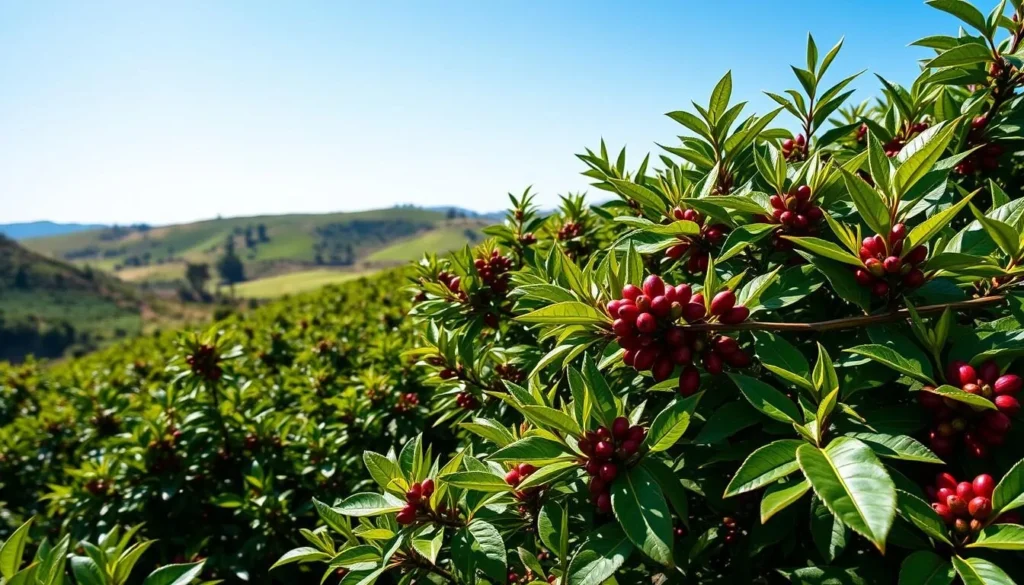
Nestled in the hills, Kissidougou offers a unique blend of culture and natural beauty. With a diverse population of around 100,000, this rapidly expanding city in southern Guinea is imbued with cultural influences from Liberians and Ivorians, mingled with the traditions of the ethnic Kissi peoples.
The city’s character is reflected in its bustling markets and distinctive architecture. However, it’s the surrounding hills covered with great fields of coffee beans that are really of interest. These coffee plantations produce some of Guinea’s finest beans, and visitors can explore the production process.
The region is also a transition zone between savannah and forests ecosystems, showcasing the region’s natural biodiversity. A local museum preserves the history and cultural heritage of the Kissi people, offering a glimpse into both agricultural production and traditional culture in southern Guinea.
Massif du Ziama: Biosphere Reserve
Nested in the heart of eastern Guinea, the Massif du Ziama is a UNESCO-designated biosphere reserve of immense ecological importance. This 1,000 square kilometer area is renowned for its dense, misty forests and diverse wildlife.

Rainforest Exploration
Visitors to the Massif du Ziama can explore the rainforest through a network of trails that wind through the dense forests, offering glimpses of the area’s rich biodiversity. Experienced local guides are available to interpret the forest environment and highlight the unique plant and animal species.
- Discover the diverse plant life, from towering emergent trees to specialized understory species.
- Encounter a range of wildlife, including primates, birds, and smaller forest creatures.
- Experience the immersive nature of rainforest exploration, engaging all the senses.
Boké: Historical Slave Trade Site
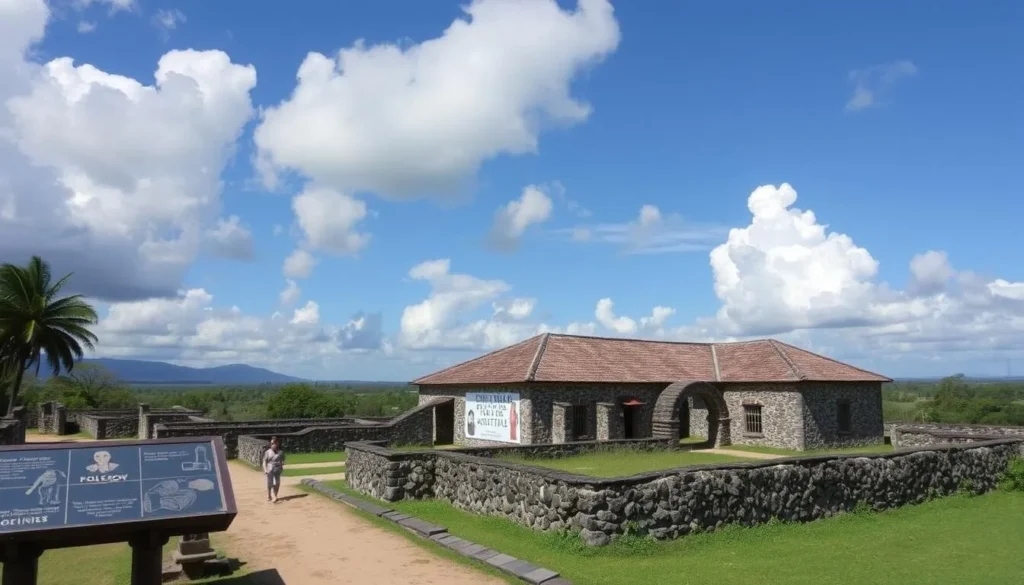
As you visit Boké, you’re stepping into a town that played a significant role in one of the most tumultuous periods in human history. Boké was a boomtown during the dark years of European slave trading in West Africa. The town’s harbors and jetties, lining the meanders of the Rio Nunez, were once departure points for thousands of convoys of human cargo headed for the Atlantic coast.
The visceral reality of this past can still be seen in the Fortin de Boké, a fort-prison turned museum that chronicles the lives and plight of captured slaves during that era. Today, Boké is not only a significant historical site but also a prime stopover on the way from Conakry to the Guinea-Bissau border.
Rio Nunez and Colonial History
The Rio Nunez river system played a crucial role in shaping the history and development of Boké. The river’s natural features made it an important route for transportation and local livelihoods. You can take boat trips on the river to understand the historical trading routes and the significance of the river in the colonial history of the region.
The broader colonial history of Boké extends beyond the slave trade, with remnants of colonial architecture and infrastructure still visible today. Other historical sites in the area help tell the story of Guinea’s colonial period, and the river connects various places to visit in the region that share this colonial heritage.
- The Rio Nunez river system and its historical significance
- Boat trips available to explore historical trading routes
- Colonial architecture and infrastructure remnants
- Other historical sites in the area
Understanding this complex history provides context for Guinea’s post-independence development and challenges, making Boké a place to visit that is truly at the heart of Guinea’s historical narrative.
Practical Tips for Traveling in Guinea
As you plan your trip to Guinea, understanding the practical aspects can make a significant difference in your travel experience. Guinea is a country with a rich cultural heritage and diverse landscapes, making it a unique destination in West Africa.
Best Time to Visit
The best time to visit Guinea is during the dry season, from November to May, when the weather is more favorable for travel and outdoor activities.
Safety Considerations
When traveling in Guinea, it’s essential to take necessary safety precautions, such as being aware of your surroundings and keeping valuables secure, to ensure a safe and enjoyable trip.
Transportation Options
Getting around Guinea can be an adventure. You have several options:
- Domestic flights connect major cities, although schedules can be limited.
- Shared taxis are a common mode of intercity transportation.
- Local transportation within cities includes taxis and motorbikes.
- Hiring a private vehicle with a driver can offer more comfort.
- Traveling by boat is also an option for reaching certain coastal and riverine places.
Understanding these places and transportation options can help you navigate Guinea more effectively.
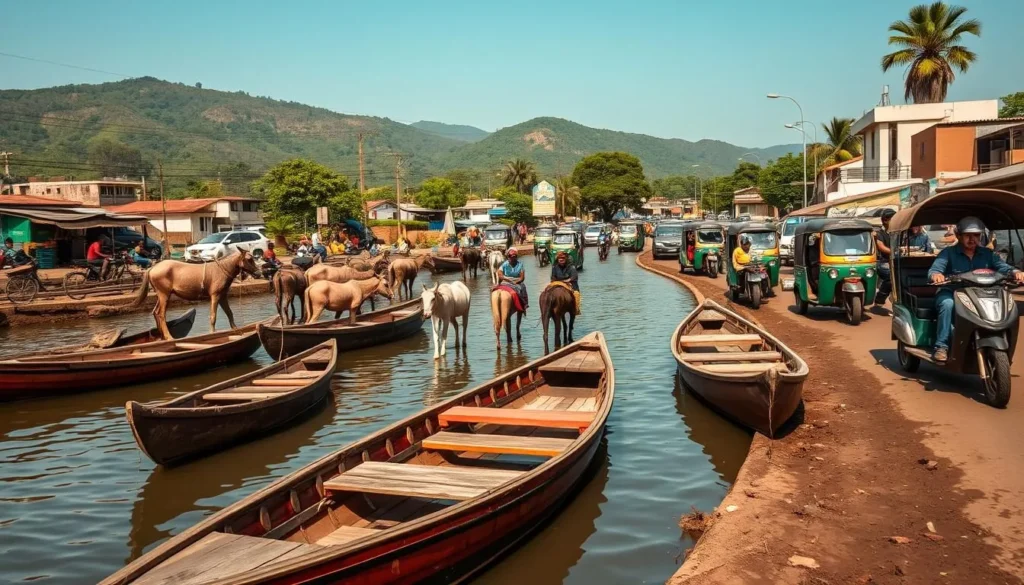
Conclusion: Why Guinea Deserves a Spot on Your Travel List
From pristine beaches to majestic mountain highlands, Guinea offers a unique travel experience. You’ll discover authentic cultural encounters and breathtaking natural beauty, making it an ideal destination for adventurous travelers. The warmth and hospitality of the Guinean people will leave a lasting impression on you. With its relatively undeveloped tourism sector, Guinea provides opportunities for genuine cultural exchange. Now is the time to visit Guinea before it becomes more widely discovered by international tourism.
The above is subject to change.
Check back often to TRAVEL.COM for the latest travel tips and deals.

